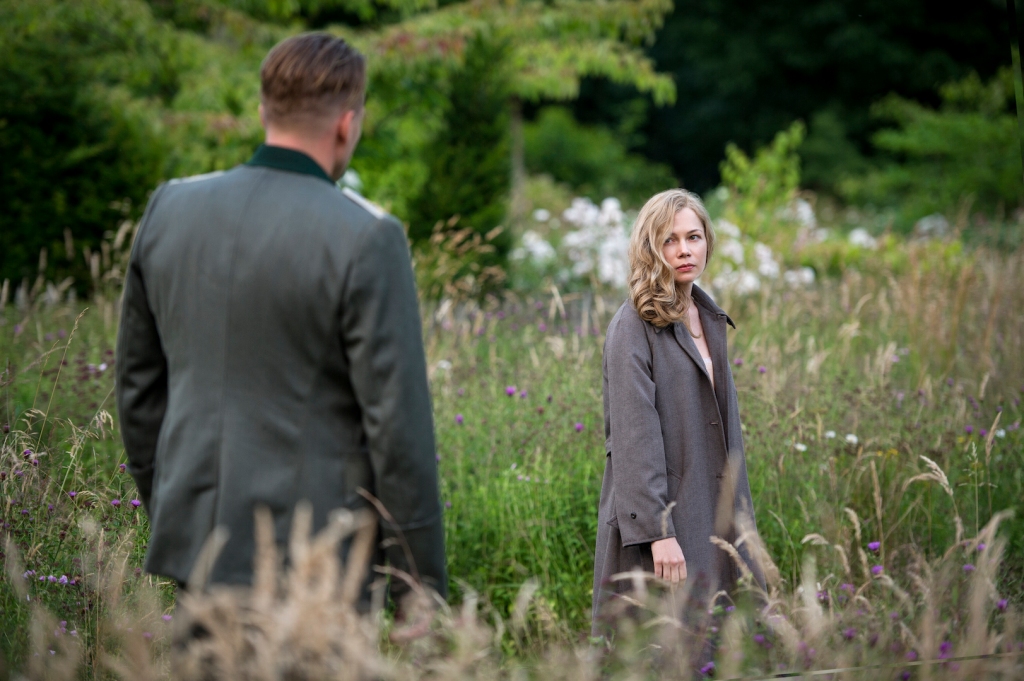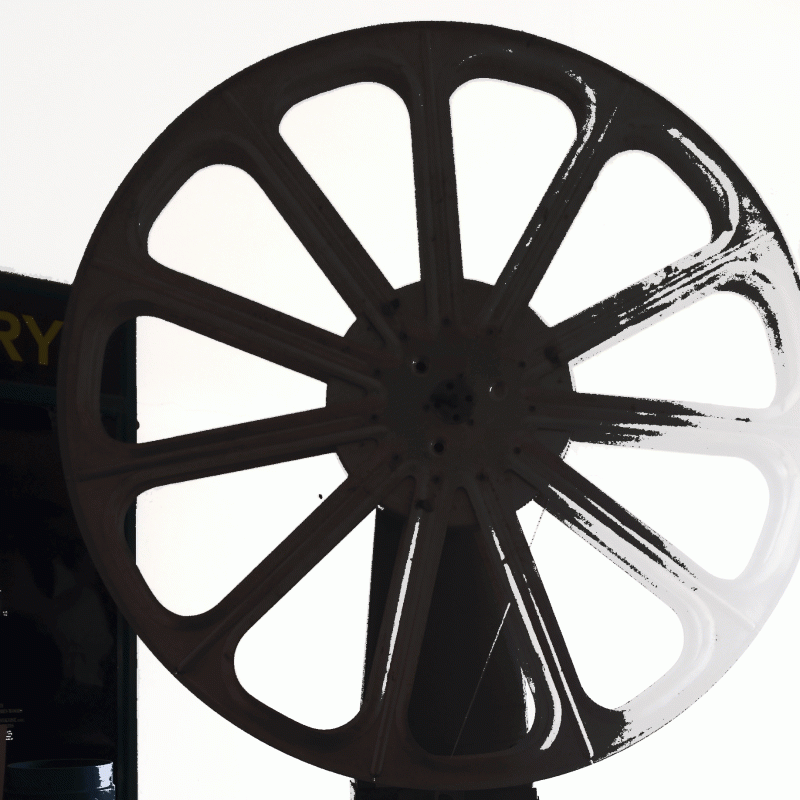
In a picturesque village on the outskirts of Paris, time seems to stand still. Young bride Lucille Angellier (Michelle Williams) goes through the routines of daily life, under the brusque supervision of her domineering mother-in-law (Kristin Scott Thomas), as both quietly wait for news of her husband at the front. Suddenly, during an ordinary drive in the countryside, both women are confronted by the shocking and violent realities of war.
Sensibly, director Saul Dibb (The Duchess) selected the second half of Suite Française, Irene Nemirovsky’s brilliant and memorable novel about what happened to ordinary people, when France fell to the Nazi army. The snobbery of an elderly, aristocratic couple (Lambert Wilson and Harriet Walter) sets in motion a chain of terrible events which leads to tragedy and tests the mettle of all the characters. The result is a big, beautiful weepy, with outstanding and utterly convincing performances from Williams, Scott Thomas, Sam Riley and Ruth Wilson.
The film is not about the brutality of the Nazi occupation. Although the anti-Semitism of the Nazi regime is shown, the fact that it is little remarked upon, and not made an issue by the population, is in itself telling. In fact, life under the Occupation goes on much as before, with the added tension that a huge troop of young men brings to a village full of women. The petty jealousies, snobbery and venality of the villagers is laid bare: the Occupation is only an occasion for these to come to the fore.
At the heart of the story is the gradual and tentative relationship between Lucille and Bruno (Matthias Schoenaerts), the young German officer who is billeted in her home. Music brings them together, and Dibb’s film finds a fresh way to communicate the old story about the healing power of art, to unite people across social and ideological boundaries.
But Lucille is no passive recipient of love or attention: she learns to act, as her loyalties are tested to the utmost. The film captures the golden ease and beauty of a long warm summer, a perfect backdrop to a romantic story. Yet the story isn’t about romance as much as it is about the tentative, yet necessary, desire to tenderly reach out a hand to a fellow human, in spite of the all-encompassing brutality and corruption. Lucille’s heroism is that she dares to do this.

Michelle Williams is an actress who carefully chooses her parts, and this is her best role yet. She manages to tread the fine line between portraying a credible 1940s housewife, and a relatable contemporary woman. If you look at films actually made in the 1940s about wartime, such as William Wyler’s Mrs. Miniver (1942), it’s clear how difficult a task that actually is.
Likewise, Sam Riley delivers an excellent turn as a disabled young farmer who, as well as being frustrated with the social structure of the community and the behaviour of his “betters”, clashes with the smug and brutal German officer Bonnet (played with creepy brilliance by Tom Schilling). Riley is an increasingly impressive actor and he does not disappoint here, perfectly capturing Benoit’s frustration of being physically disabled, yet immensely strong-willed to protect his wife and family against all odds.
Saul Dibb’s attention to detail and realism is a fresh approach to the period drama, since Suite Française is anything but twee. The production is sumptuous without being lavish. Period detail is captured well, with excellent use of locations and particularly good work by costume designer Michael O’Connor and production designer Michael Carlin.
The director of 2004’s award-winning East End gang-pic Bullet Boy was probably the best choice to adapt for the screen Irene Nemerovsky’s coruscating study of character under pressure. He has carefully and cleverly exercised restraint, not hiding the sex and violence around which the plot turns, yet never indulging them either.
By focusing on human frailties and courage, Suite Française tells us much more about war than a film about military escapades. Although the film has little of Irene Nemirovsky’s acid wit and deep psychology, it delivers a compelling, mostly unsentimental and credible picture of the Occupation.
The only unconvincing note is one that probably can’t be helped. The film is about the German occupation of France, yet all the French characters unnervingly have British accents, while the Germans emote Teutonic-ally. This issue came up last year over the game Assassin’s Creed, about the French Revolution’s British accents and it’s been affecting many other films. It was not resolved then, and it won’t be now.
Suite Française is released in UK cinemas on March 13th 2015


